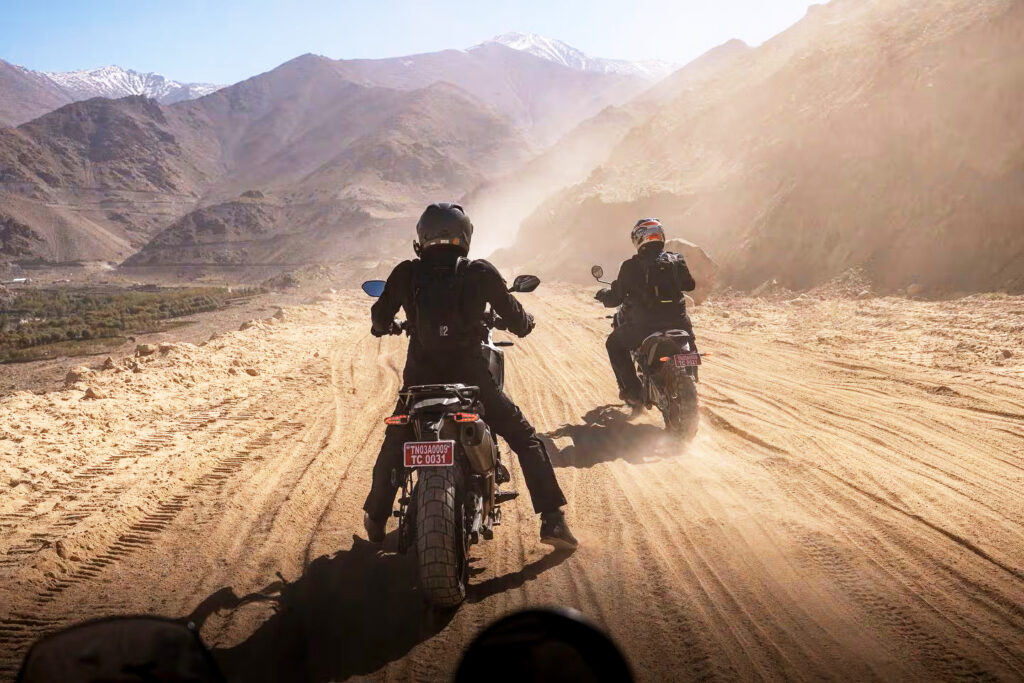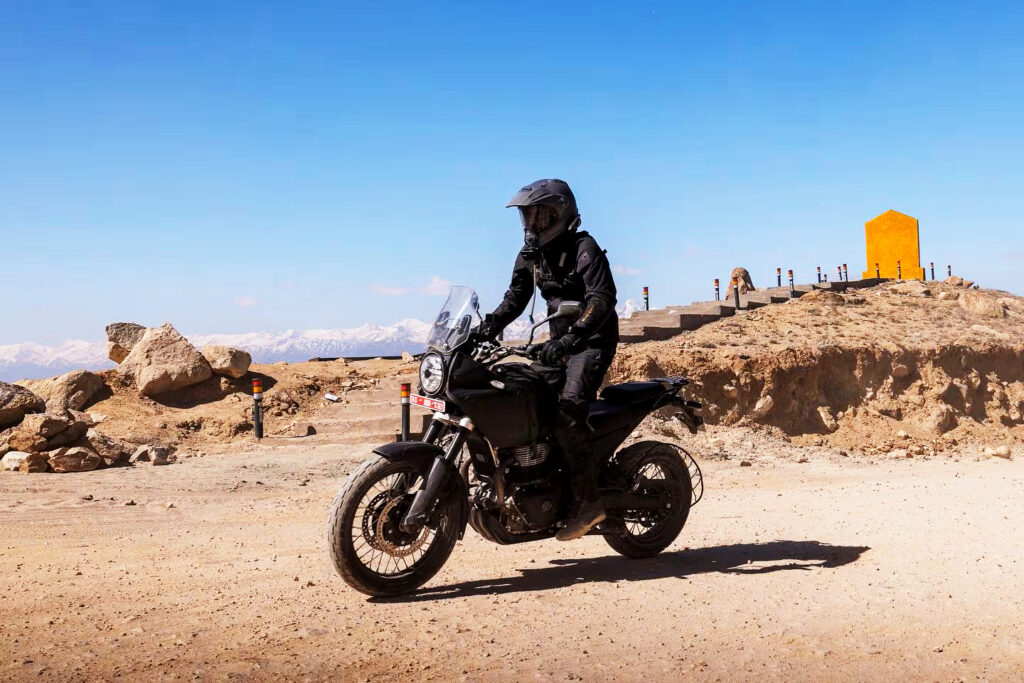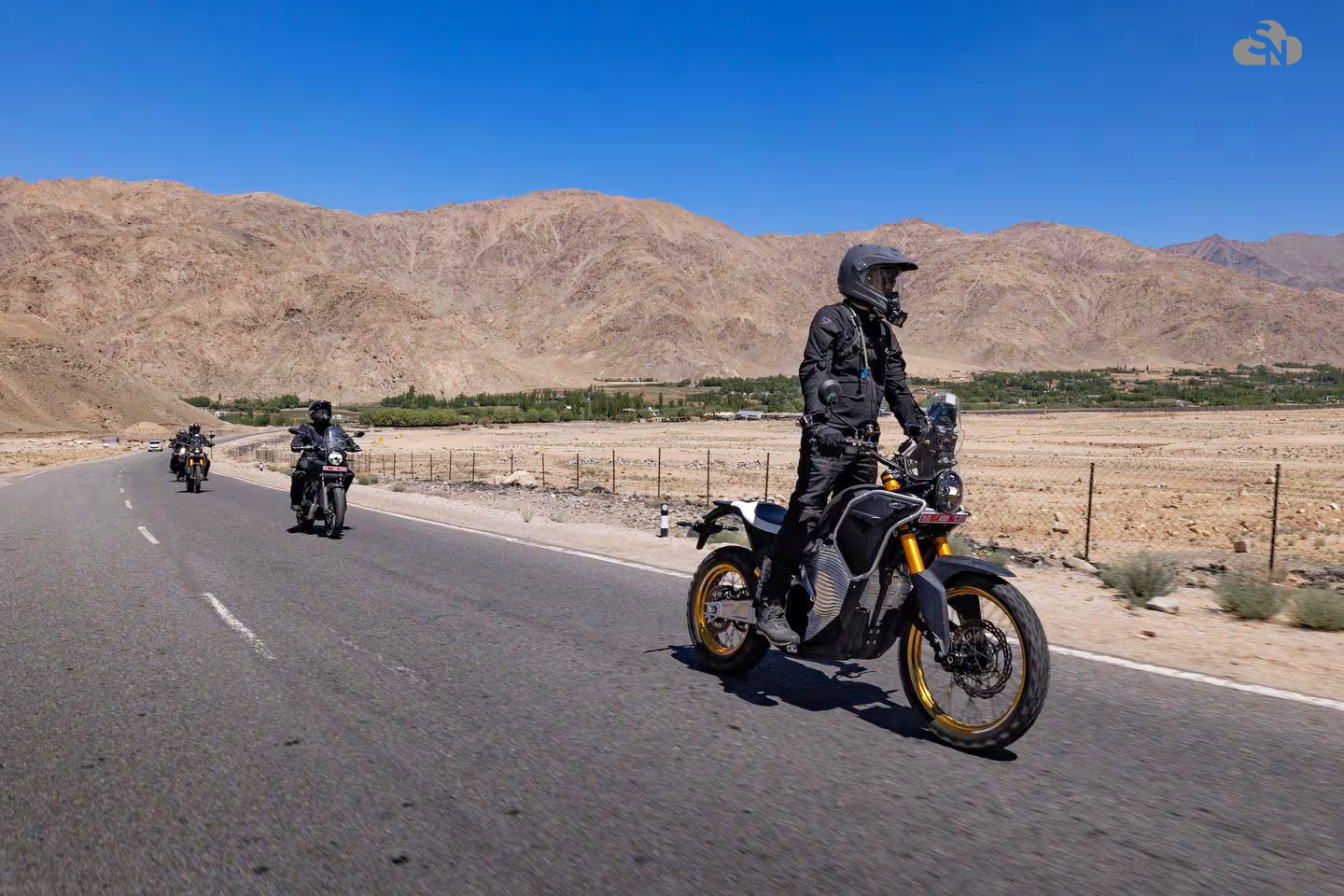After being seen during testing, Royal Enfield has now formally released pictures of their future twin-cylinder Himalayan adventure bike. By sharing images of CEO B. Govindarajan and a group of riders testing the bike in the northern Indian Himalayan region of Ladakh on Instagram, the company verified its arrival.
Mark Wells, the head of Design and Strategy at Royal Enfield UK, was personally involved in the testing process, contributing his expert insights firsthand during the field trials. Alongside the forthcoming parallel-twin variant, the photos also displayed an improved version of the Royal Enfield Electric Himalayan prototype.
First, let’s discuss the twin. This may be the debut of a new line of 750cc parallel-twin motorcycles, according to Indian rumours. Based on the current 648 cc air-cooled engine (48 horsepower), these bikes should have more power and torque because of their bigger capacity. Just before the release of a new faired Continental GT café racer with a 750cc engine, there is also conjecture that this may be the last model in the 650 lineup.
A 2022 product planning chart that was leaked displayed a family tree of future models. The Himalayan Twin’s silhouette was displayed on that chart with other twin-cylinder motorcycles, such as the Bear 650 Scrambler, that had not yet been made public. Spy shots of the café racer hint at major design updates, with visible sensors and additional wiring on the engine during testing, suggesting notable changes under the hood. The Himalayan Twin prototype, on the other hand, conspicuously lacks any data-logging apparatus, which may suggest it is utilising the current 650 engine.
The Himalayan’s chassis is entirely different from other Royal Enfield twin-cylinder models, regardless of whether it has a 650cc or 750cc engine. Its contemporary design, which includes an alloy swingarm, monoshock rear suspension, and upside-down front forks, replaces the twin-shock, vintage 1960s frame. While the majority of the style is obviously modern, some older features, such as the circular headlight, are still there.

Unlike hardcore off-roaders, who usually use 21-inch front and 18-inch rear wire-spoke wheels, the bike has 19-inch front and 17-inch rear wire-spoke wheels covered in dual-purpose rubber, suggesting a more road-orientated adventure setup. By eschewing the oversized “beak” style present on many other adventure bikes, the dual front disc brakes and low-mounted front mudguard further emphasise its on-road focus. The engine’s underside is shielded by a strong bash plate, and a 2-into-1 exhaust header feeds into a collector box that is hidden beneath the engine.
Though it is anticipated to be a colourful TFT display rather than an analogue one, Enfield seems to have stuck with a round instrument cluster within the cockpit rather than the rectangular panels that many competitors prefer.
Putting the Him-E Electric Himalayan in Focus
The Him-E appears to have been designed with significant off-roading in mind, in contrast to the twin. It features rugged knobby tyres and a large 21-inch front wheel, emphasising its off-road-ready design. The rider’s forward area feels more approachable due to the one-piece seat and the absence of a fuel tank. The surface here is also rough and sticky.
The Him-E electric bike that is almost ready for production has changed significantly from the 2023 prototype. It now seems to have a central frame structure close to the steering head between two battery packs. Airflow akin to that of the original Flying Flea is made possible by the addition of visible cooling fins on the outside and in between the battery packs.
The metal swingarm, gold-coloured front forks, and single-petal front disc brake appear to be identical to those of the 2023 prototype. On either side of the swingarm pivot, the rear frame portion has been improved, though, with obvious aluminium trellis-style castings fastened to what is probably a structural battery case.
It appears that the seat, which was formerly supported by a steel tube subframe, is now a self-supporting component that may be composed of composite or plastic. With curved side panels held up by tubular protection elements up front, the Him-E’s design has also changed, giving it a considerably tougher and more determined look.

Timeline for Launch
The twin-cylinder Himalayan is expected to hit the market later this year, arriving as a 2026 model. Around the same time, an official update and maybe a confirmed release date are also anticipated for the Electric Himalayan (Him-E) project.

